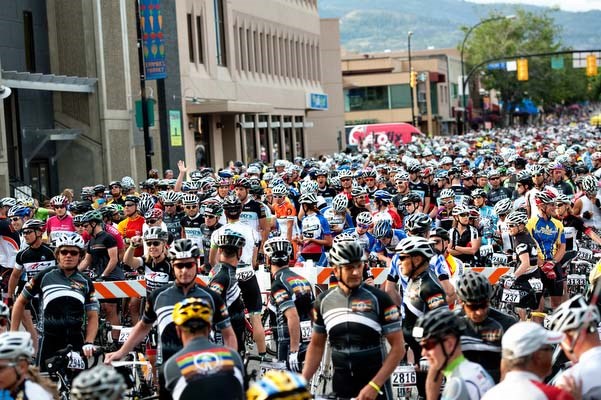On July 7, myself and 2,497 other cyclists rode in the third annual Valley First Granfondo in Penticton.
The day was absolutely perfect for a ride, with a cool breeze and even a bit of rain to cool us.
Although I know not everyone comes away having a great ride, it seemed to be a good day for most, especially the winners. New course records were set in the men and womens events: Andzs Flaksis from Riga, Latvia finished in three hours, 55 minutes and 12 seconds, and Gillian Moody from North Â鶹´«Ã½Ó³»finished in 4:11:16 to beat the womens record by 16 minutes.
The ride has three distances to choose from: A 55 km Cortofondo, 92 km Mediofondo and the 160 km Granfondo. I chose the 160 km ride with the goal of improving on my time from last year.
For most riders in any of these three distances, this ride is a big deal and an event they have trained for since April. After the adrenaline wears off and life goes back to (relative) normal, the riders have three choices.
They can hang up their bike and end the season. They can continue training and choose another goal ride. Or, the can take a short break, recover from the event and the long months of training, learn from the ride and make the necessary changes in their program and then continue to train for another goal ride.
It should be obvious that Im hoping everyone chooses the third option.
No matter what level of rider you are, if you push yourself to complete the distance in the fastest time possible, you are going to need time to recover. Many athletes rush through this stage, anxious to begin training for the next event. But by rushing or skipping the recovery stage, you risk the chance of burning out, over-training or getting injured.
Usually one week to a maximum two weeks is enough to recover from an event, but everyone is different so you need to figure out what works for you. Although there are more sophisticated ways to find out if you are truly recovered, trial and error works as well.
Just like your training program, every athletes recovery will be different. If you recover quickly and this was not your goal ride, you might only take a few days off of hard training before continuing with the program again. If this was your goal ride, you may take a few days or weeks off the bike and then ease back into training with a few short rides. Generally speaking, if you are hoping to peak for another ride or event later this season, seven to 10 days of easy riding should be enough recovery time.
During the recovery stage, you have some time to think and review the mistakes you made during training and during the event. By recognizing your mistakes, you can make the necessary changes in your program so you dont repeat them in future events.
Common mistakes include starting out too hard, not eating enough food, not drinking enough fluids or not having a strong enough base before attempting to ride the distance, which is otherwise known as undertrained.
For most athletes, resting is one of the hardest phases of training but if you can persevere, you will start the next phase of training stronger and with a more focused plan.
Myself, I like to use this short time off the bike to catch up with friends that I dont get a chance to see during the riding season. After a weekend of relaxation, Im always itching to get back on my bike and am mentally prepared to train hard again.
Congratulations to everyone who rode in Penticton. I hope you enjoyed your recovery week and I look forward to seeing you at the next Granfondo!
Kristina Bangma is a coach, personal trainer and writer with a love of riding and racing. Email questions to [email protected].



